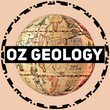Jamieson Goldfield Prospecting Map – Discover Gold at the Gateway to Victoria’s High Country
Step into one of Victoria’s most scenic and historically rich alpine goldfields with the detailed Jamieson Goldfield prospecting maps. Located in the foothills of the Great Dividing Range near Mansfield, the town of Jamieson grew during the height of the 1850s gold rush, famed for its coarse alluvial gold and later quartz reef discoveries. Today, with large areas of crown land and state forest still open to fossickers with a valid Victorian Miner’s Right, Jamieson offers modern prospectors the chance to search for gold amid some of Victoria’s most beautiful mountain landscapes.
🪙 Historical Overview: Jamieson’s Golden Beginnings
Gold was discovered at Jamieson in 1854, along the creeks and river flats feeding into the Goulburn River system. Early miners found rich alluvial gold in the gravels of Jamieson River, Big River, and their many tributaries, often recovering coarse nuggets and heavy gold dust with minimal equipment. As the shallow alluvial gold became scarcer, attention shifted toward the surrounding hills where quartz reef mining took hold, particularly around sites like Lucky Star Reef and Morning Star Reef. Jamieson became a bustling gold town during the 1860s, with its fortune built on a combination of riverbank alluvial gold and reef-driven hard rock mining. Today, the creeks, gullies, and hills around Jamieson still whisper of gold to those willing to walk the old diggers' trails.
✨ Notable Finds & Field Highlights
The Jamieson district became known for its coarse, heavy alluvial gold, with early diggers regularly recovering nuggets weighing a few ounces. Jamieson River and Big River yielded rich gravels, while nearby tributaries like Moonlight Creek, Gaffneys Creek, and Sailor’s Creek also produced impressive finds. When alluvial mining slowed, the surrounding hills produced rich quartz reefs, with many reefs yielding visible gold specimens and sustaining reef mining well into the late nineteenth century. Even today, careful detectorists and panners find nuggets and gold specimens along the river flats, dry creeks, and in the hills surrounding Jamieson, particularly in lightly worked tributaries and forgotten gullies.
🥾 Ideal For
Jamieson is perfect for detectorists chasing coarse alluvial nuggets along creek flats, terraces, and low ridges, as well as for those seeking specimen gold near old reef workings. Panners can work in Jamieson River, Big River, and their many feeder creeks, where fine gold and the occasional nugget can still be recovered. History lovers will enjoy the old gold trails, mining ruins, and historic town atmosphere that make Jamieson such a charming prospecting base. Whether you are an experienced gold hunter or a first-time fossicker, Jamieson offers stunning scenery, historic richness, and real potential for golden finds.
⚠️ Fossicking Rules and Access Information
Fossicking for gold is permitted on crown land, state forest, and designated creek beds around Jamieson with a valid Victorian Miner’s Right. Prospectors should avoid private property and national park areas, especially within Alpine National Park boundaries. Always confirm land status using the GeoVic mapping tool before setting out. Good starting points include public land along Jamieson River and Big River, and in the forests toward Gaffneys Creek and Woods Point. Always respect environmental protections and heritage sites to ensure this pristine region remains open and beautiful for future prospectors.
Strike Gold Where the Mountains Meet the Rivers – With the Jamieson Goldfield prospecting map, you can follow the old diggers’ tracks, uncover hidden creeks and gullies, and discover gold in one of Victoria’s most stunning high country goldfields. Real adventure and real gold await in the hills of Jamieson.
Geological and topographical map of Jamieson 1915:
https://viewer.slv.vic.gov.au/?entity=IE15495149&mode=browse
